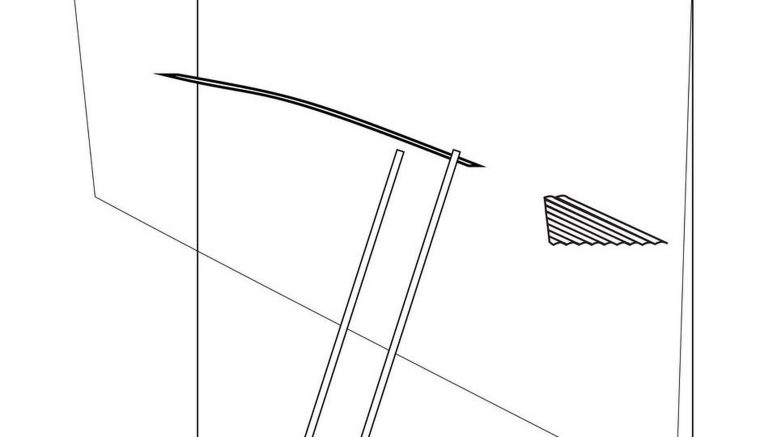On now at the PLATFORM centre for Photographic and Digital Arts is Traces, a multimedia group exhibition curated by Tayler Buss and Meganelizabeth Diamond. Featured artists include Alexis L.-Grisé, Katrina Marie Mendoza, Hanna Reimer, Tobin Rowland and Chukwudubem Ukaigwe.
Arranged in a fairly straightforward manner around the perimeter of the gallery, the works in Traces begin to the left of the entrance, leading viewers clockwise around the space. There is a natural order and flow to the works and their relatively small scale invites patrons to come closer and inspect them, rather than forcing themselves into view.
The exhibition speaks to what is left behind — memories, objects and other remnants of life — through “the translation, appropriation and rebirth of images through re-photography, collage and sculpture” in the unique perspective of each artist.
Overall, Traces deftly navigates this complex and subjective concept, resulting in a thought-provoking exhibition that mediates the past, present and future into one distilled moment. Every piece contributes to the exhibition’s existence as a contemporary instance of visual poetry, each quiet and reflective in its own way, yet speaking in their own time, tones and rhythms.
Ukaigwe’s mixed media creations are the first pieces encountered, one of which sits on the floor, resting against the wall next to a small pile of bricks.
In these works, Ukaigwe creates apocalyptic scenes with paint and photo transfers framed by industrial materials such as pipes, rails and wood. One can barely pick out where Ukaigwe’s photos end and the paintings begin, and his use of industrial materials firmly grounds his images in our world, allowing us to see a reality that is potentially both future and present.
A highlight of Ukaigwe’s four works is Labyrinth 006, in which flames burn across a city landscape surrounded by pipes, rail, wire and other materials, which cast shadows that turn the wall behind into part of the work itself, rather than simply the plane it hangs on.
Reimer’s works stand apart from the rest of the exhibition through her unique choice of one sole medium — fabric.
Covered in colourful, abstract striations that defy easy comprehension, Reimer’s polysilk works hang from the walls, folding in on themselves and creating depth and shadow that emphasizes their transformative existence as both two- and three-dimensional objects.
Like Ukaigwe’s works, one of these pieces, entitled Screenshot2021-04-05 at 7.111.14PM is partially laid on the ground, turning it into something more fluid than concrete. This ambiguous physicality is paralleled in its abstracted imagery and, between undulating lines of colour, one can almost — but not quite — make out lines and shapes of an image obstructed from view.
Mendoza’s work was installed in a small room at the back of the gallery, isolating it from the rest of the exhibition. Upon entering this dimly lit space, four installations come into view.
Playing upon a wide variety of line and movement, Mendoza’s installations feel like abstract drawings come to life, springing off a two-dimensional plane and into a three-dimensional existence —thin pieces of wood tower overhead while delicate compositions of cloth, candles and wire sit on the ground.
In shelf life, Mendoza uses unconventional materials to create three-dimensional marks in the world, emphasizing that gravity and space are the surfaces on which she draws.
Rowland’s works were some of the most intimate pieces in Traces —likely due to the heavily textured surfaces and overt mark-making which indicate the presence of the artist’s hand in their creation.
With their brightly contrasting tones, Rowland’s works pull viewers in from a distance but hold them with their details. In particular, there is a sense of tactility in Tulips that is difficult to resist, built up in the layers that make up its image — a grassy field with brightly coloured flowers surrounding saturated orange photo transfer of Dolly Parton wielding a shotgun.
In contrast to Rowland’s textured works, Grisé’s cyanotypes offer a bold yet soft place for the eye to rest. These works have an air of sentimentality to them, particularly Film still, but even stronger is the contradictory sense of fleeting permanence.
A play on the duality of absence and presence emanates from Grisé’s pieces, which feel as though they mirror the process of vision itself — light creates an imprint of Grisé’s objects on paper similar to how it impacts the retina, projecting and transforming the traces of photons through the circuitry of our nervous system.
Traces will run at the PLATFORM centre from Nov. 12 to Dec. 11.


